Engine Bolt Thread Cleaning
If a nut or bolt is hard to remove, it will be just as hard to tighten. A thorough cleaning will ensure accurate torque readings and avoid potential problems.
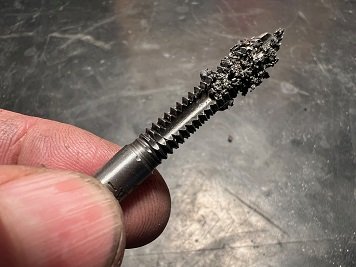
Consider the worst case scenario that you really want to avoid: Damaged threads or crud in a blind hole preventing a bolt from being completely installed. This may ultimately lead to continued tightening and cracking the hole, resulting in total part failure.
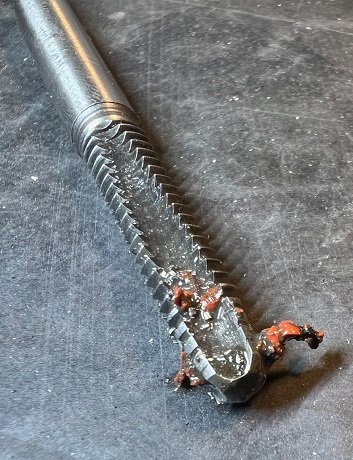
Cleaning crud out of bolt holes.
*******************
Cleaning vs Tapping
Thread chasers are designed to safely clean debris from bolt thread holes. They are not designed for cutting new threads--they are best suited for cleaning rusty or damaged threads.
Threading taps are designed to cut threads where none have existed before. They can remove material from existing threads when used too aggressively, and make old threads looser.
A lot of techs, including myself, use taps to clean bolt threads.
Here's how to stay out of trouble when using a tap to clean threads; use fingers-only force. If it requires more force than two fingers to thread in, you may be be cutting new threads!
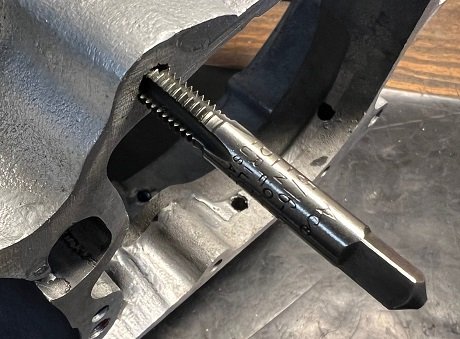
The Difference Between Tap and Thread Chaser
Thread chasers are similar to taps, but are slightly smaller in diameter and don't have an edge on them that actually cuts.
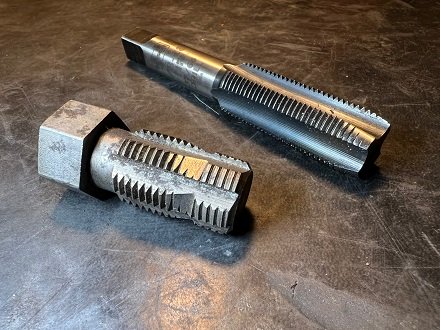
Thread chaser in foreground, threading tap in background
When To Use A Thread Chaser
So what are thread chasers good for ?
They are safe to use in more critical spots. Examples would include engine main bearing caps, or cylinder head bolt holes, which call for extreme torque values. A thread chaser will not remove any excess metal.
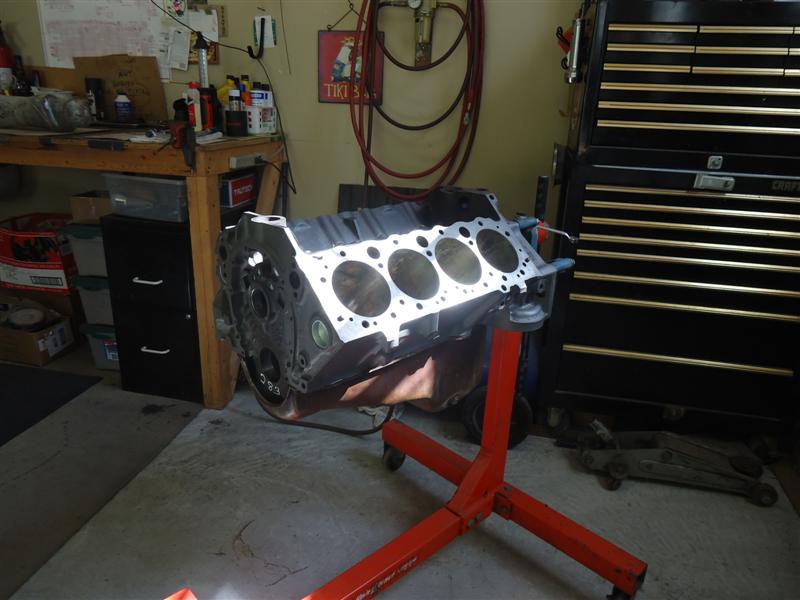
This would be of particular concern on a vintage engine, like this 1966 Chevy V8.
Most other engine thread holes won't see more than 40 or 50 ft/lbs of torque; for example; intake manifold or accessory bolt holes in cylinder heads. Being super-critical here isn't necessary. A hand-held tap will get the job done.
*******************
Cleaning Crud Out Of Bolt Holes
Dirty bolt threads can hide dirt, rust, grease, thread sealant, or a combination of these.
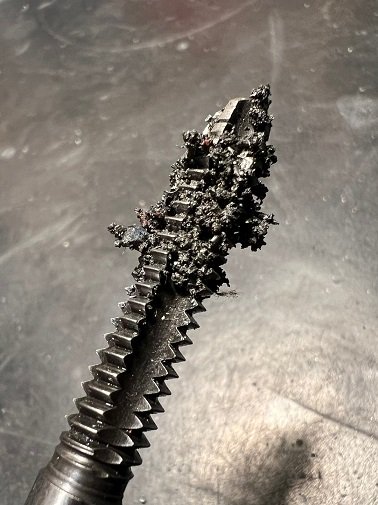
My usual method for cleaning bolt threads: Run a tap into the hole as far as I can using fingers only until it stops
Unscrew it out and clean the crud off the tap
Spray in some brake parts cleaner
And a few blasts of compressed air.
I'll repeat this process until the tap comes out clean.
When I think I've removed all the junk out of the threads, I'll do it again.
Sometimes it will take 4 or 5 passes for the threads to be completely clean. You'll be surprised how much crud can hide inside a bolt thread!
When done, you can now get precise torque values when assembling to ensure an even clamping force.
*******************
Clean Bolt Threads
Remember to clean the bolt threads, too.
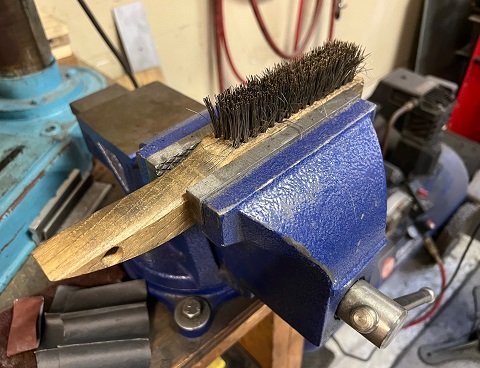
Before I had a bench grinder, I cleaned bolts on a wire brush mounted in a vice.
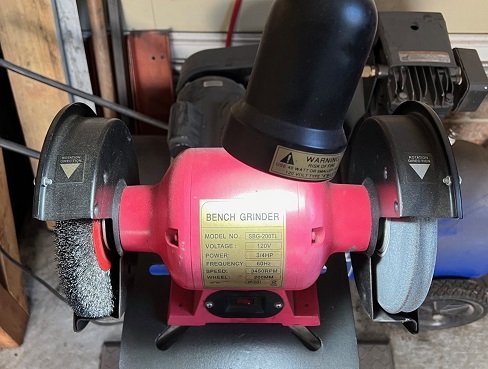
A bench grinder with a wire wheel does the same thing, it just cleans it quicker.
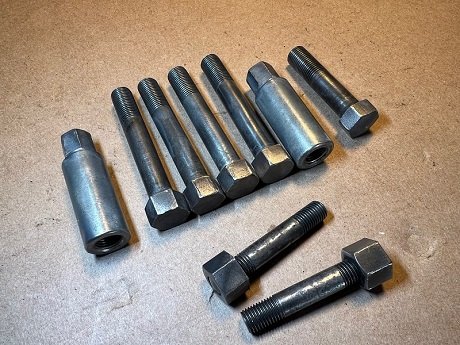
Norton Commando cylinder bolts cleaned and ready to be installed
*******************
Conclusion
Dirty threads will give false readings while final-torquing bolts. A thorough cleaning will help avoid potential issues like cracked blocks or stripped threads due to trapped fluids or debris.
When bolt threads are properly clean, you should be able to thread in a bolt just by using your fingers.
******************
Notes and Misc
One by one, as needed, I've accumulated quite a few taps and thread chasers.
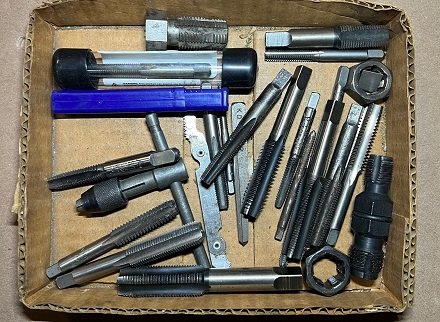
To keep them organized and find them easily, I have a couple of small parts organizers.
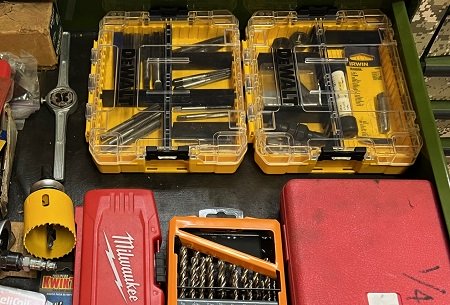
Tap and Die Set
If you don't have one already, consider purchasing a complete tap and die set.
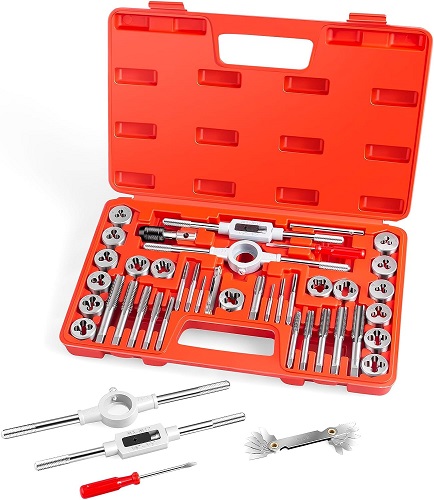
You'll get an assortment of sizes, handles and accessories, and a case to keep them in.
*******************
Related Articles: